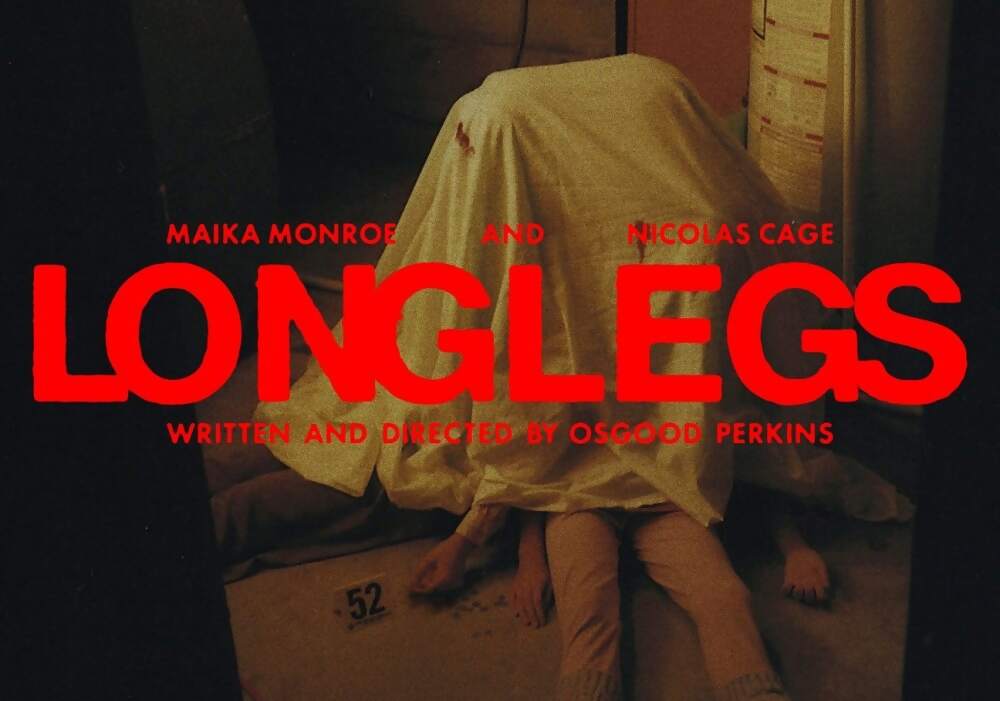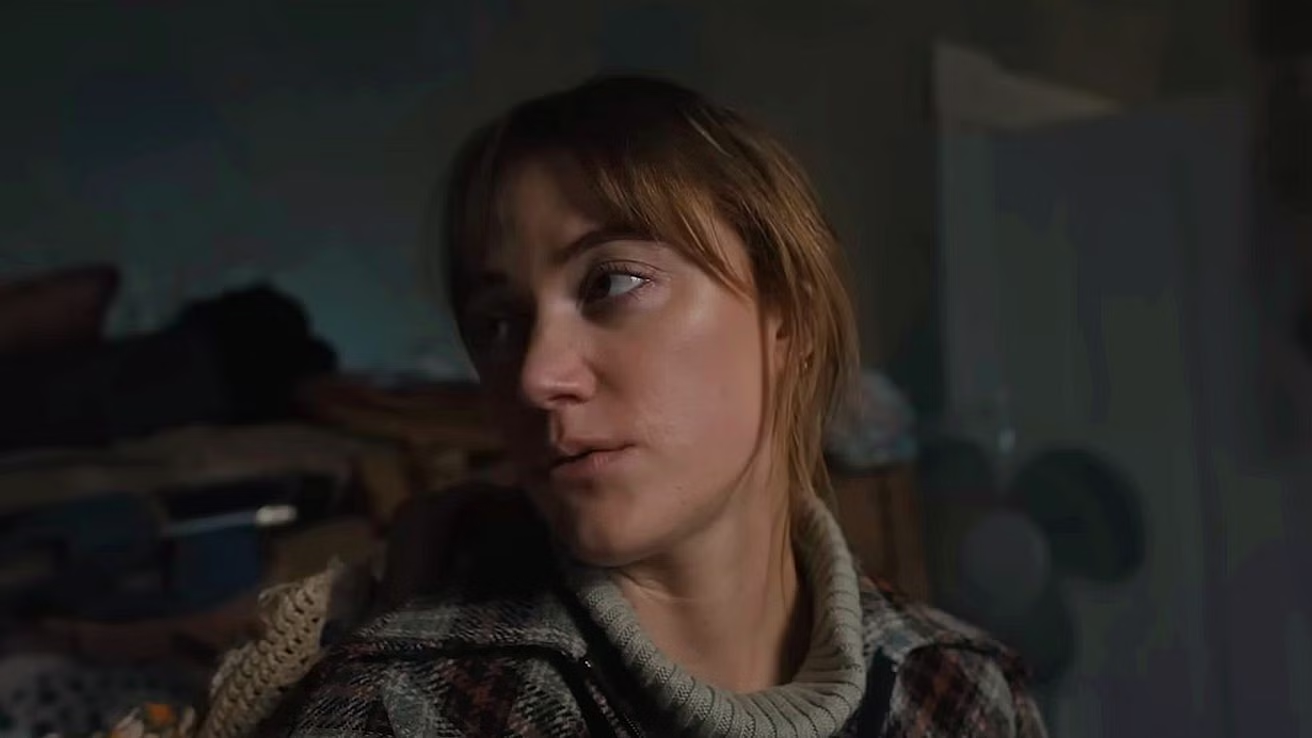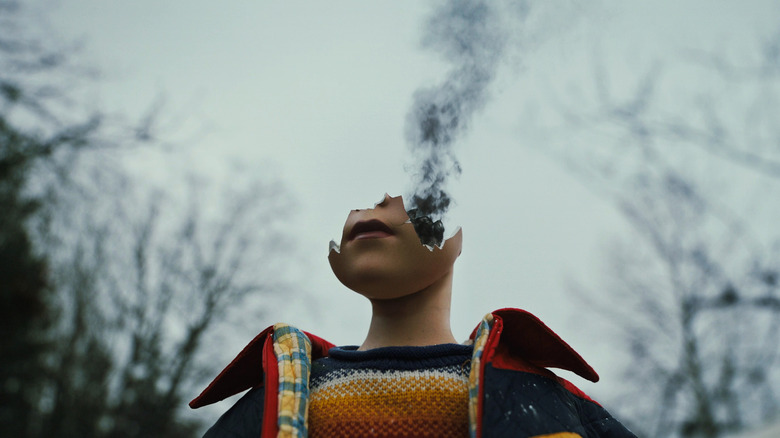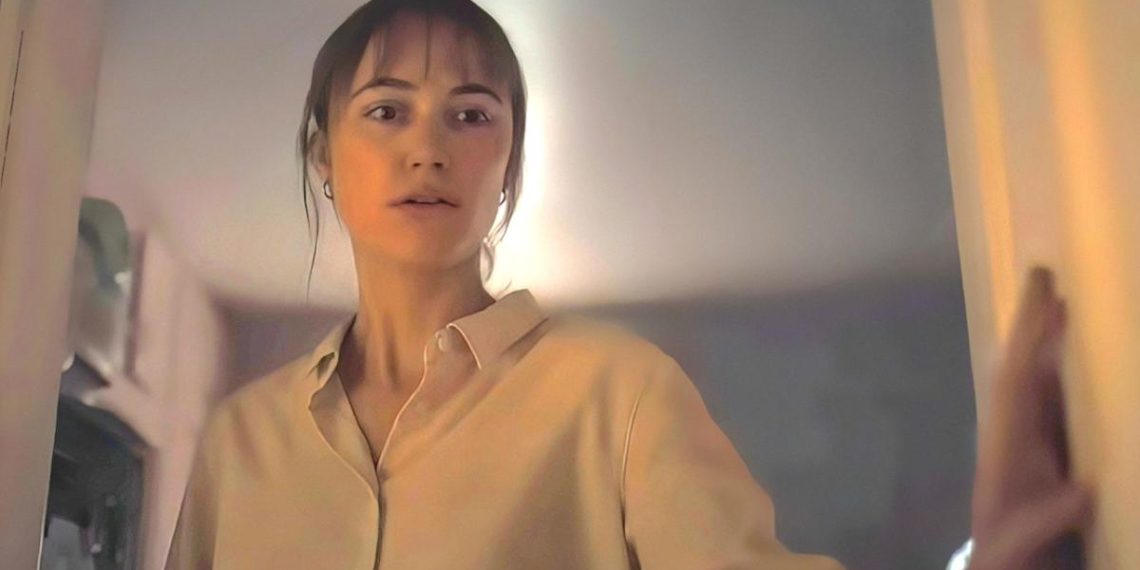The 2024 horror movie Longlegs, directed by Osgood Perkins, culminates in a chilling and intense conclusion that leaves viewers questioning the fate of Agent Lee Harker. The story follows Harker, played by Maika Monroe, as she investigates a series of murders committed by the titular character, Longlegs, portrayed by Nicolas Cage in a role that critics have hailed as one of his most iconic.
Throughout the film, Harker decodes several cryptic letters left at crime scenes by Longlegs, which ultimately leads her to uncover a surprising personal connection to the killer. In a major plot twist, Harker realizes she was one of the girls Longlegs targeted in the past. With the FBI’s help, Harker identifies Longlegs’ true identity, and his eventual capture seems imminent.
Longlegs Ending Explained

As the investigation intensifies, Agent Harker revisits her own past, eventually confronting her mother, Ruth. Ruth is revealed to have played a pivotal role in the killings. Ruth confesses that she made a deal with Longlegs, agreeing to deliver handmade dolls to each family and ensuring the murders happened, in exchange for sparing Harker’s life. In the final confrontation, Ruth murders one of Harker’s colleagues, and Harker is forced to take lethal action against her mother.
Despite her victory over Ruth, Harker hesitates when it comes to destroying the doll Longlegs created, which has a strange influence over her. It seems that the doll may have some kind of supernatural control over Harker, causing her to freeze at a crucial moment. As she stares hypnotically at the doll, the eerie silence intensifies, leading to the belief that Harker is now under its influence.
Is Harker Now Under Longlegs’ Control?
The film’s ending leaves viewers questioning whether Harker has truly fallen under Longlegs’ influence. As she attempts to shoot the doll, the sound of her gun firing suggests something is wrong—perhaps the gun’s safety is on, or she is unable to pull the trigger. The doll seems to have a powerful psychological hold over her, making it impossible for her to destroy it.
Longlegs, even in death, might still exert control over Harker. The doll is his final creation, and it may serve as his lingering presence, reaching out beyond the grave. While Harker could eventually overcome this trance-like state, it seems more likely that she will continue to be manipulated by Longlegs’ influence. The possibility exists that she will become a new vessel for his legacy of death.

The Biblical Context: Revelation 13:1 and The Beasts
A key theme in Longlegs involves religious and biblical symbolism, particularly the quote from Revelation 13:1, cited by both Longlegs and Ruth before their deaths. This passage refers to a beast with seven heads and ten horns, often interpreted as a demonic or Antichrist figure. In the film, Longlegs and Ruth symbolize these “beasts,” controlling the families they target. Longlegs uses these families, believing they are part of some grand plan to “save” them through death.
The film introduces an unsettling idea that violence can be justified under the guise of righteousness. Ruth’s transformation into a “beast” is a prime example of someone who, though initially manipulated by Longlegs, ultimately embraces the same deadly path. By quoting Revelation 13:1, Ruth and Longlegs align themselves with the biblical beasts, continuing their work of corruption and control even after death.
The Doll’s Influence on the Victims
Another chilling element of the film is the role of the doll. Longlegs crafts each doll with a hollow silver orb inside its head, which emits a strange, static-like whisper that only the families can hear. This sound is a key part of the killer’s manipulation, hypnotizing the victims and causing them to fall under his control. It’s suggested that Longlegs, even after death, is able to pass on his influence through the doll, continuing to torment his victims long after his capture.
The 14th Birthday Murders and Biblical Connections
Longlegs’ methodical approach to his killings involves targeting families with daughters born on the 14th day of any given month. The murders occur close to or on the 14th day, a number that holds biblical significance. The number 14, when broken down, adds up to 7 + 7, symbolizing the two beasts—Longlegs and Ruth—and further tying the story to the themes of Revelation.
The 14th birthday killings might symbolize a twisted form of “divine” action, with Longlegs believing that by carrying out these murders, he is fulfilling some higher purpose. The connection to Revelation 13:1 adds depth to the film’s unsettling narrative, as Longlegs sees himself as an instrument of divine punishment.

The Final Deaths and the Continuing Legacy of Longlegs
Throughout the film, several key characters meet their tragic ends, contributing to the general sense of doom. These deaths include Longlegs himself, Ruth Harker, Agent Carter, and several others connected to the killer’s twisted plan. Despite the deaths of these primary figures, the final moments of the film suggest that Longlegs’ work is far from over.
Harker’s hesitation to destroy the doll hints at the possibility of a new chapter in the story, with Longlegs’ influence continuing to spread through the people he leaves behind. The doll’s presence suggests that the cycle of violence could begin again, and Harker might be the one to carry out Longleg’s evil legacy.
The Film’s Themes of Family and Violence
Beyond its supernatural aspects, Longlegs explores the disintegration of the nuclear family. Longlegs targets not just children but parents, forcing fathers to commit violence against their wives and daughters. This dark portrayal of family dynamics is especially significant considering Harker’s background, having grown up in a single-mother household.
The film also underscores how anyone, no matter how good or righteous they may seem, can be influenced to commit unspeakable acts. The characters in Longlegs are driven by a belief that they are protecting loved ones or fulfilling a greater purpose, yet they are ultimately manipulated into committing violence. Harker’s final act of killing her own mother demonstrates the devastating cycle of harm that is perpetuated throughout the film.




